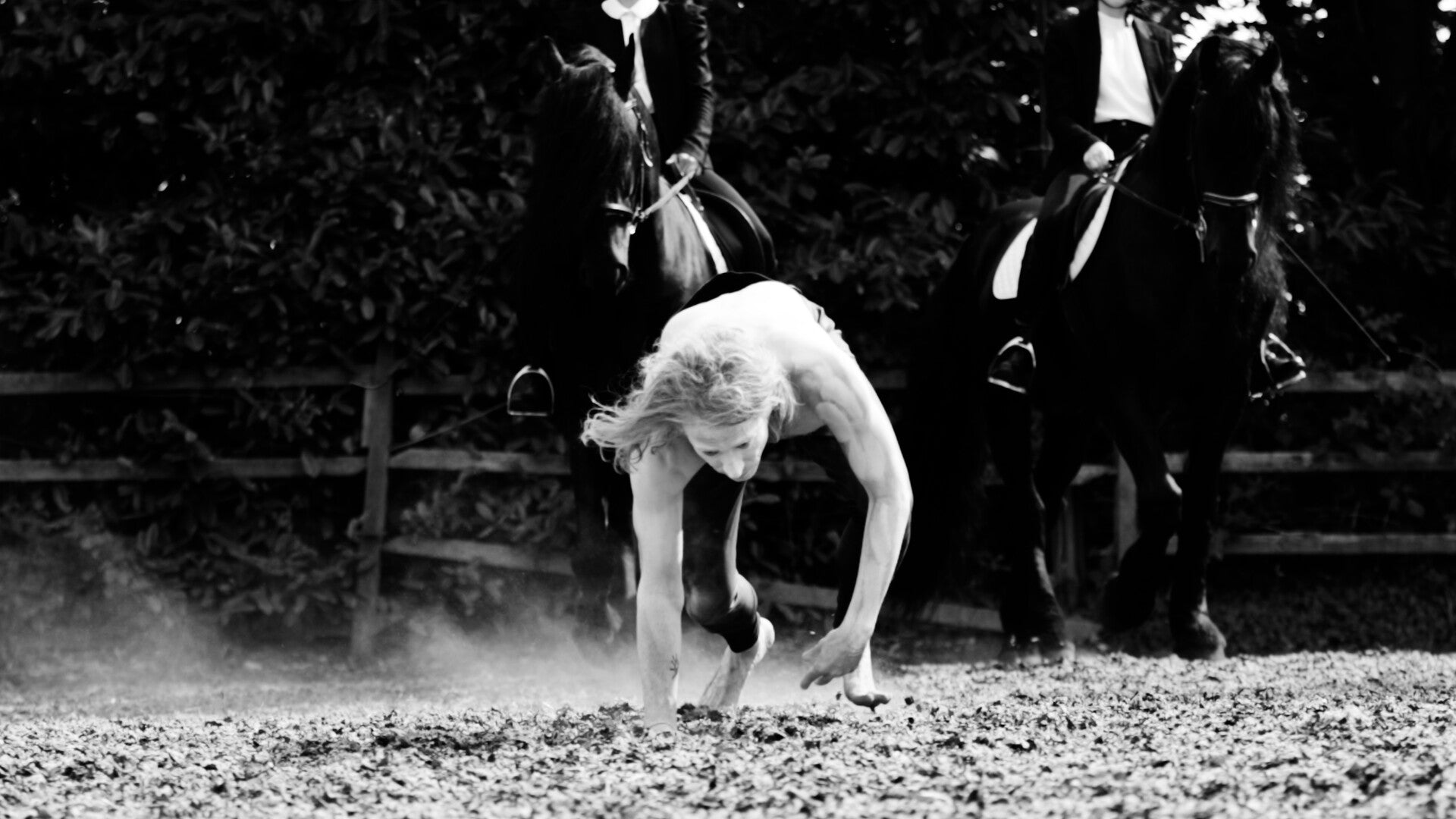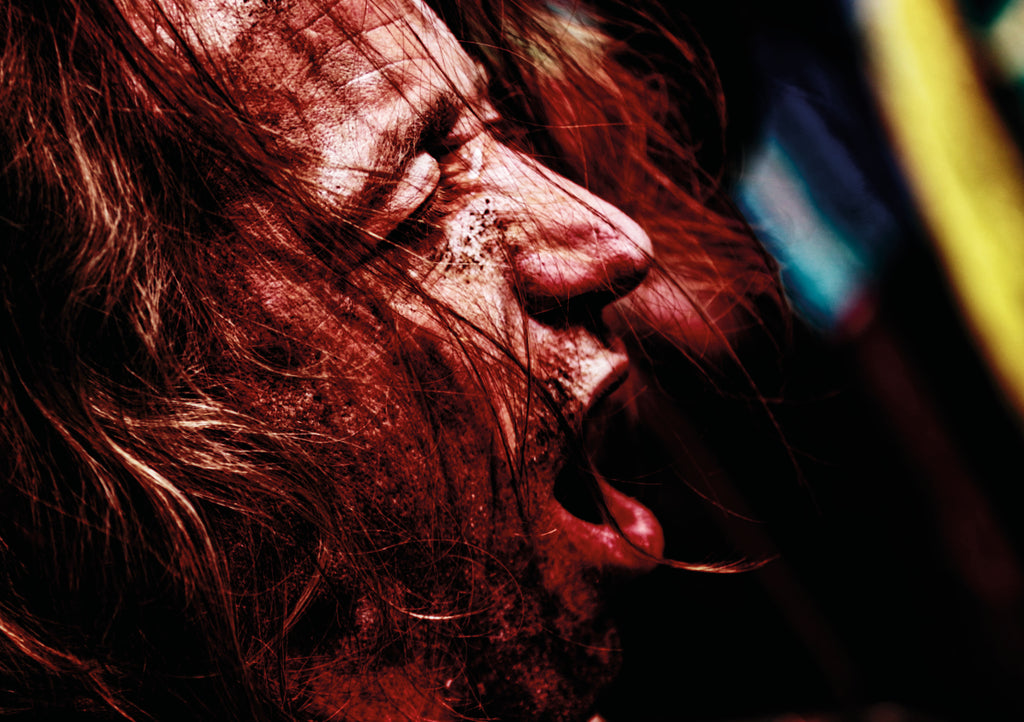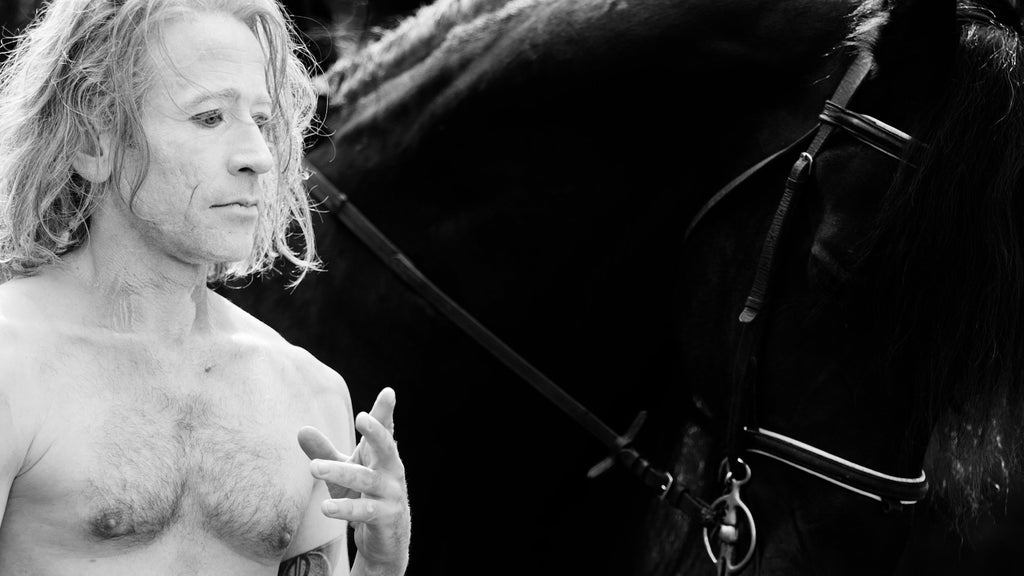How was it working with Paul Michael Henry? He's a wonderful performer.
It was very rewarding working with Michael. I put a call out looking for a dancer and received many emails, but when I looked at his video, I knew in seconds that I’d be working with him. It’s always quite instant for me, I know whether someone is going to work or not. It’s not so much related to their own work, previous experience or technical ability, it’s much more instinctual than that, you can feel whether or not the chemistry is there.
When I planned to shoot in Iceland for example, I wasn’t initially looking for a dancer, but I saw one headshot of this Japanese dancer on the Iceland Dance Company website and I instantly knew I had to work with him—I did and he was amazing.
Shooting Michael was very exciting, not only is he a brilliant and expressive dance performer, but he’s also very good at acting and has an incredible presence on camera. We shot a scene in an abandoned cemetery in London, a rope-based performance on a mediaeval chair, and a performance with two Friesian black stallions.
One of my favourite shots is Michael moving in sync with Thor, one of the stallions, both of them performing a metronomic movement in complete harmony. I felt so excited shooting it as it truly felt like a special moment, capturing that rare and magic instinctual connection between two different species.
Looking back on what I shot, it’s also very interesting to see Michael’s range of emotions captured on camera. He's very expressive and manages to convey a lot in his performance with quite an economy of movement, which I like. He also has the most wonderful voice and Scottish accent.
When I’m shooting, I’m so focused on handling everything and getting the shot that I don’t really get to appreciate the performance until reviewing it later, so it’s always a relief to find out it turned out as you expected.
What, if any, are the challenges in framing dance on screen?
I think what initially got me interested in photographing and filming Butoh dancers is that I haven’t actually seen any live performances of any of my favourite Japanese performers, and there aren’t that many archival films of their work, so I had to imagine their performances based on the photographic testimony that exists. A photograph can be such a tantalising glimpse into another world and it always sparks my imagination.
I’m fascinated with capturing the Body in movement, and particularly the bodies of athletes and dancers. For me, filming is motion, I’m actually incapable of standing still while I shoot. I find filming on a tripod, for example, very difficult, so I always leave these shots to my other camera operator if I have one with me. I love moving around my performer, getting different angles, whether it’s getting right on top or underneath them, circling them, or focusing on one part of their body only. That’s how I personally enjoy their performances. I don’t often watch dance shows as I find it very difficult to appreciate a performance from sitting in a chair.
The environment in which they perform is also crucial to me, I wouldn’t be able to shoot in a location that doesn’t inspire me. Some of the locations I have shot with my dancers include a volcanic black sand beach at the bottom of an Icelandic glacier, an abandoned UFO house in Taiwan, a Renaissance garden of monster statues in Italy . . . these always become part of the story, so I always find my performer and location before I develop my ideas and concept further.




comments